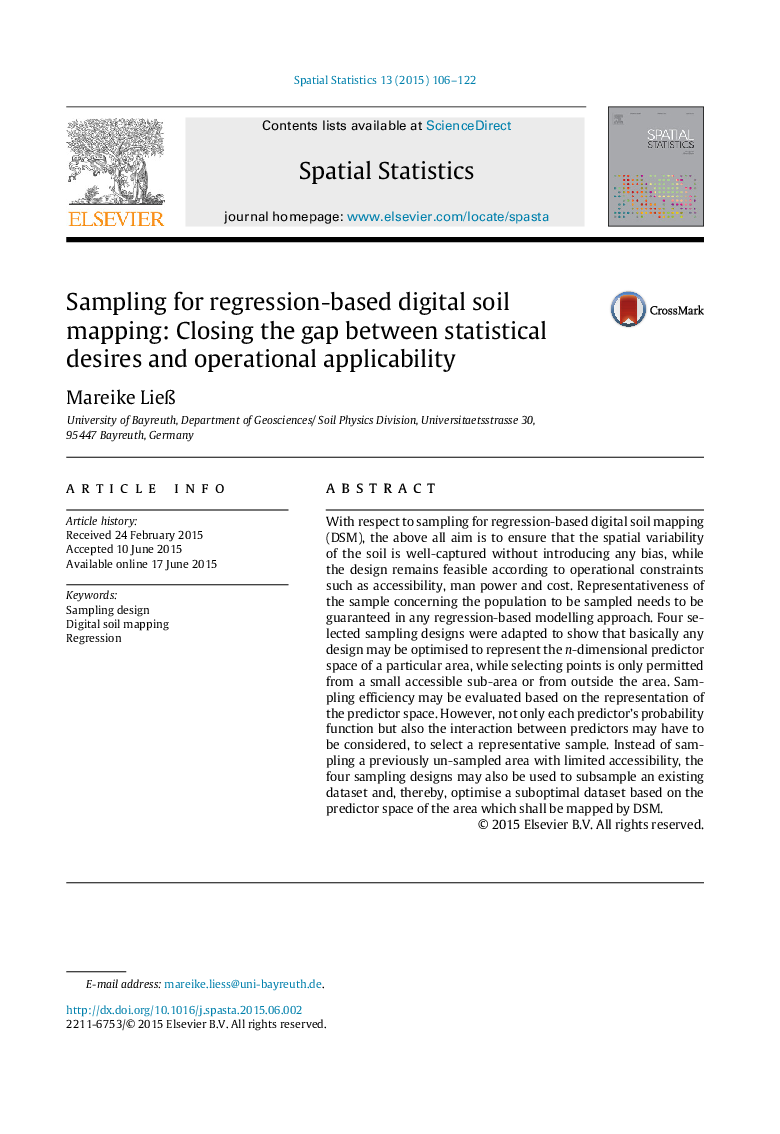| کد مقاله | کد نشریه | سال انتشار | مقاله انگلیسی | نسخه تمام متن |
|---|---|---|---|---|
| 1064541 | 1485786 | 2015 | 17 صفحه PDF | دانلود رایگان |
With respect to sampling for regression-based digital soil mapping (DSM), the above all aim is to ensure that the spatial variability of the soil is well-captured without introducing any bias, while the design remains feasible according to operational constraints such as accessibility, man power and cost. Representativeness of the sample concerning the population to be sampled needs to be guaranteed in any regression-based modelling approach. Four selected sampling designs were adapted to show that basically any design may be optimised to represent the nn-dimensional predictor space of a particular area, while selecting points is only permitted from a small accessible sub-area or from outside the area. Sampling efficiency may be evaluated based on the representation of the predictor space. However, not only each predictor’s probability function but also the interaction between predictors may have to be considered, to select a representative sample. Instead of sampling a previously un-sampled area with limited accessibility, the four sampling designs may also be used to subsample an existing dataset and, thereby, optimise a suboptimal dataset based on the predictor space of the area which shall be mapped by DSM.
Journal: Spatial Statistics - Volume 13, August 2015, Pages 106–122
